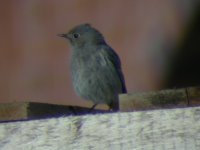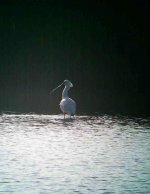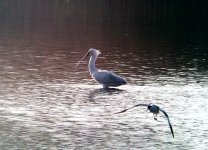update from FlashesI arrived at 6am just getting light...vis mig Spike and me only birders on site with Gert at the Moors. meadow pipit 20. sand martin 15 sailing pool. swallow at 8.40 moving north. Also teal 5. gadwall 4 (2prs). shoveler pr.shelduck 5..tufted 14 flashes + 20 sailing pool. little grebe 1st flash. avocet 25.. lapwing 4 males. curlew 5. oyc 2. raven still on nest.. cettis 2 singing. little egret in front of hide.
later add Peregrine, greylag, Teal 7, coot 20, herring gull 4, BHG 800, stock dove 4,
more mipits moving through mid morning total 60 including the 25 on the top of the north field.
Sailing pool:GCG 5, tufted 20, coot 10,
Moors: A few more people had appeared by the time I arrived at the car park - Bobby P, keith M, crofty, Tim and his Mrs, Steve T, Terry N and Martin
There was a good variety of species on site and a few more sand martins moved through.
The New Zealand pygmy weed was getting a pounding from the dabblers feeding in the Broadmeadow pool. Initially there were c25 shoveler, but when a female sparrowhawk from out with prey (possibly a snipe), many more shot out of the peripheral vegetation. 2 lapwings were displaying and a whisp of snipe flew around. Water rail and cetti's again were very vocal.
Species count Moors: Little egret, GCG 4, little grebe 5 min, cormorant 10, shoveler 56 poss 58, Teal 7, shelduck 2, tufted c60, water rail 4 calling, snipe 4, lapwing 3, Oystercatcher 4, Med Gull 2nd summer, song thrush 2, cettis 2, chiffchaff 3, sand martin 3, reed bunting 7 along east side,
North Moors: gadwall pr, teal 4, water rail 2 calling, cettis w, song thrush 2 singing








